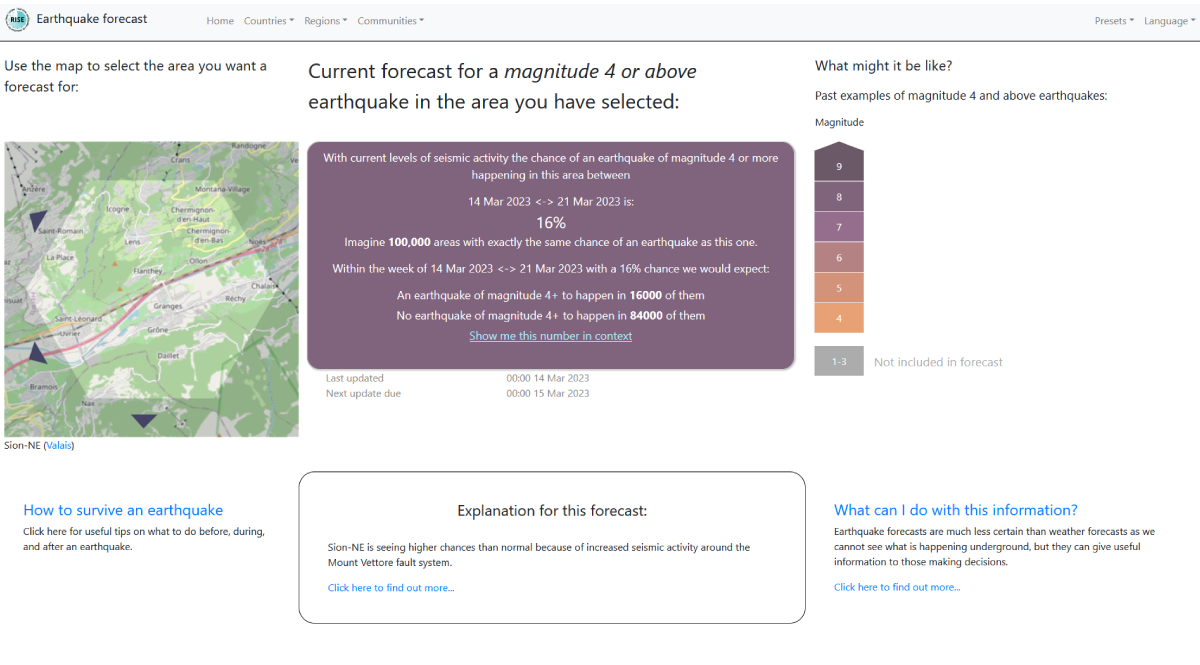Earthquake forecast communication
What is earthquake forecast communication trying to achieve?
Seismologists work on understanding the movements of the earth and how they might affect the people and built structures on the surface. The information and knowledge that they have, though, is only of use if it helps inform the planning, preparation, and response to earthquakes.
Perhaps the most important, but also the most difficult, questions that seismologists are asked are ‘what is the chance of a damaging earthquake happening in this area, and if it does, what are its likely effects?’ This is the basis for operational earthquake forecasting (OEF), and operational earthquake loss forecasting (OELF), and the answers are always going to have a lot of uncertainty: earthquakes cannot be predicted, however much we know and understand – but we can sometimes tell that they are more likely in certain areas due to movements that have been detected in the earth’s crust.
Forecasts like this require careful, precise, honest and unambiguous communication - sometimes to people who have little or no grounding in the geological principles that underlie the information. They are not warnings, and they are not giving people a ‘message’ – telling them to do or not do something – they are more complex to communicate than that.
This means that the forecasts need to be carefully co-designed with all the different audiences that might use them: an iterative process to understand what information they need to make decisions, their prior knowledge and misperceptions on the topic, and stages of testing how people interpret the information.
What has been done in RISE?
The care method of co-design of communications has been used already, for example, to design “aftershock” forecast communications in New Zealand (e.g. [1–3] and the US (e.g. [4,5], and for multi-hazard communications in Switzerland [6,7].
During the RISE project, we focused on how best to communicate OEF in Europe. We spoke to 173 people in interviews and focus groups, mainly from Italy, Switzerland and Iceland, but including experts based around the world. These ranged from member of the general public to engineers; from storm and flood forecasters to journalists; first responders and civil protection to seismologists.
After several rounds of development of different designs for the forecast information, we also carried out online surveys of 8,196 members of the public across three countries (the U.S., Italy & Switzerland) to measure how they interpreted the risks being presented in the forecasts using various wording styles and graphics.
As a result of all of this work, we have produced a set of guidelines that we hope will help anyone trying to communicate OEF or OELF, and have made our test website code freely available.
Related sites
New developments in physics- and statistics-based earthquake forecasting
How to fight earthquake misinformation? - A communication guide
European rapid earthquake loss assessment
Citation
Freeman, Alexandra L.J., Dryhurst, Sarah, & Luoni, Giulia. (2023). Good practice report: earthquake forecast communication. Zenodo. https://doi.org/10.5281/zenodo.8075047
Reviewers
Irina Dallo, Rémy Bossu
Further information
